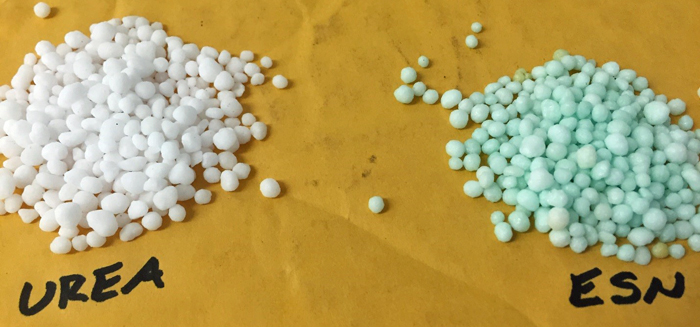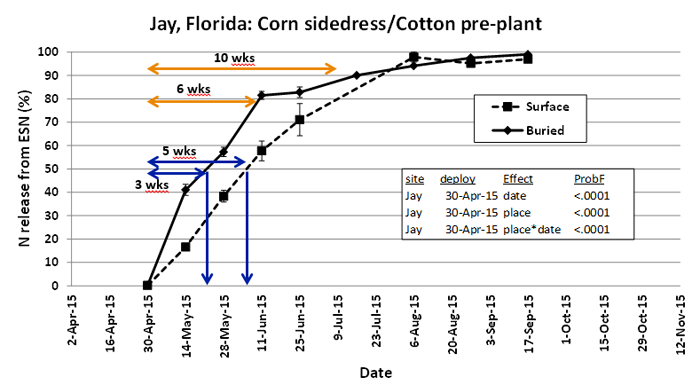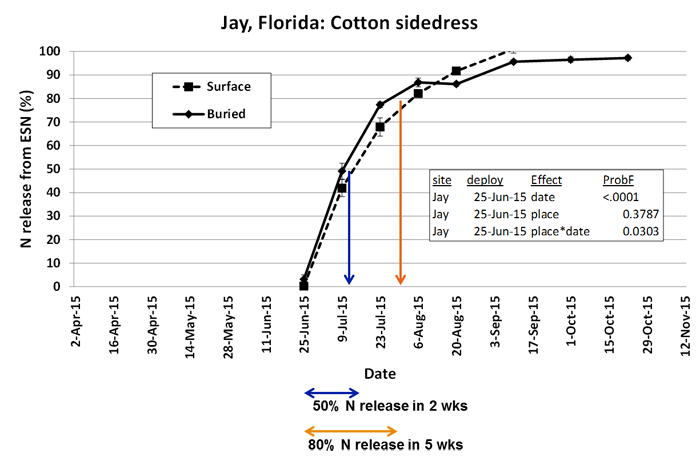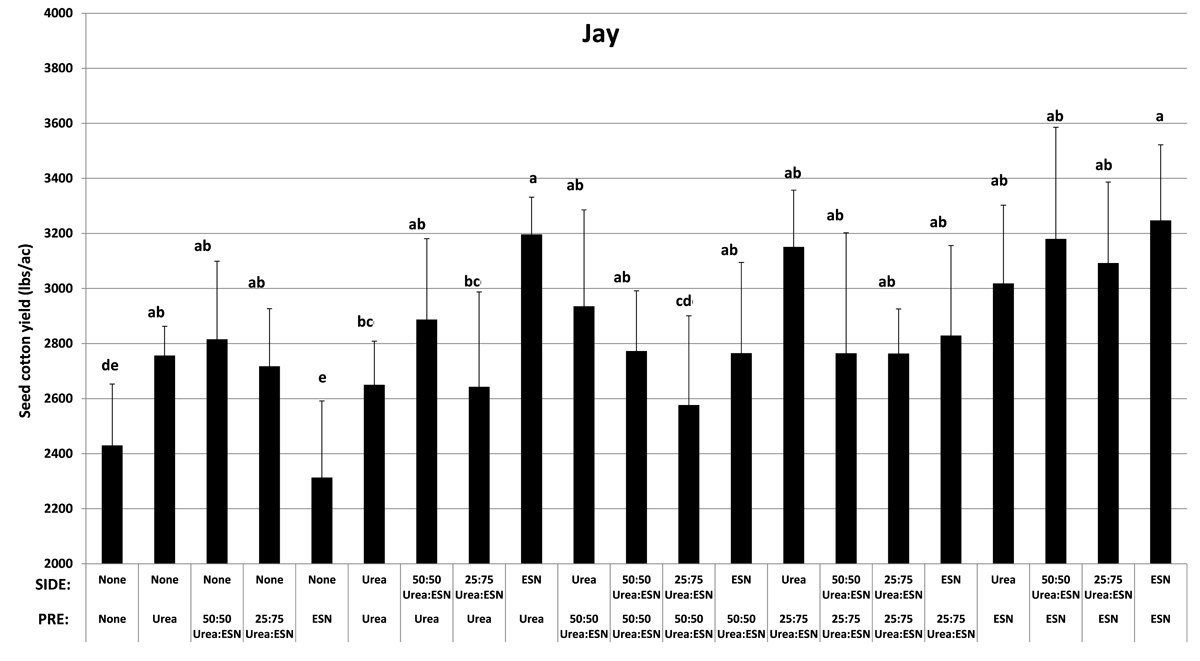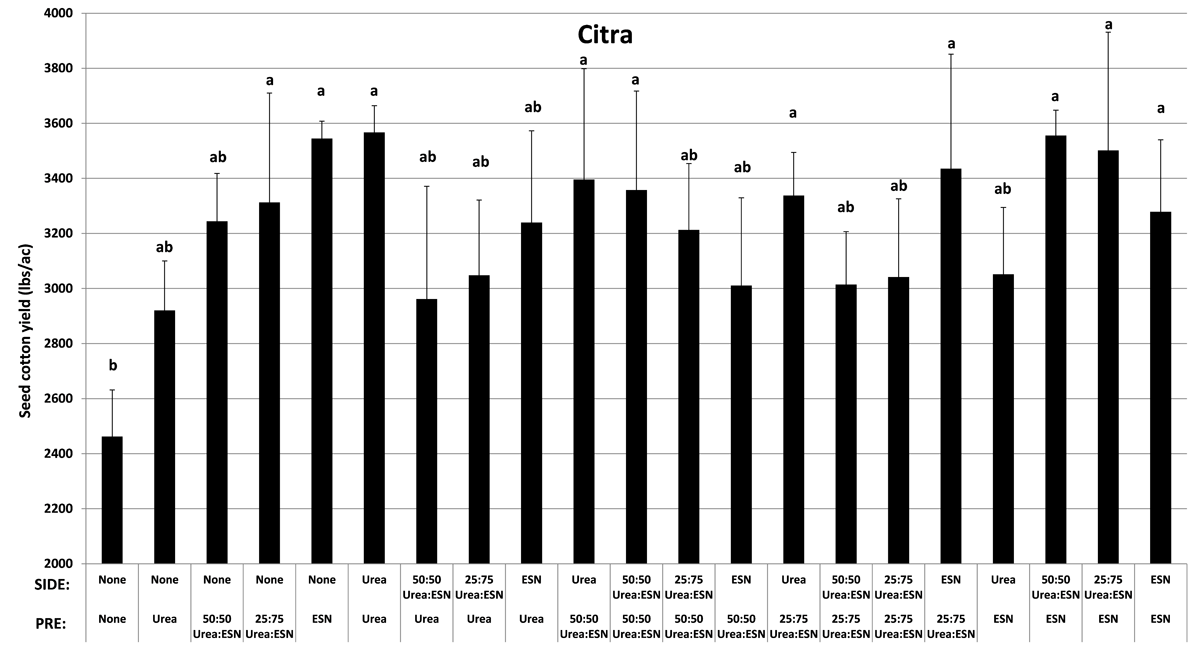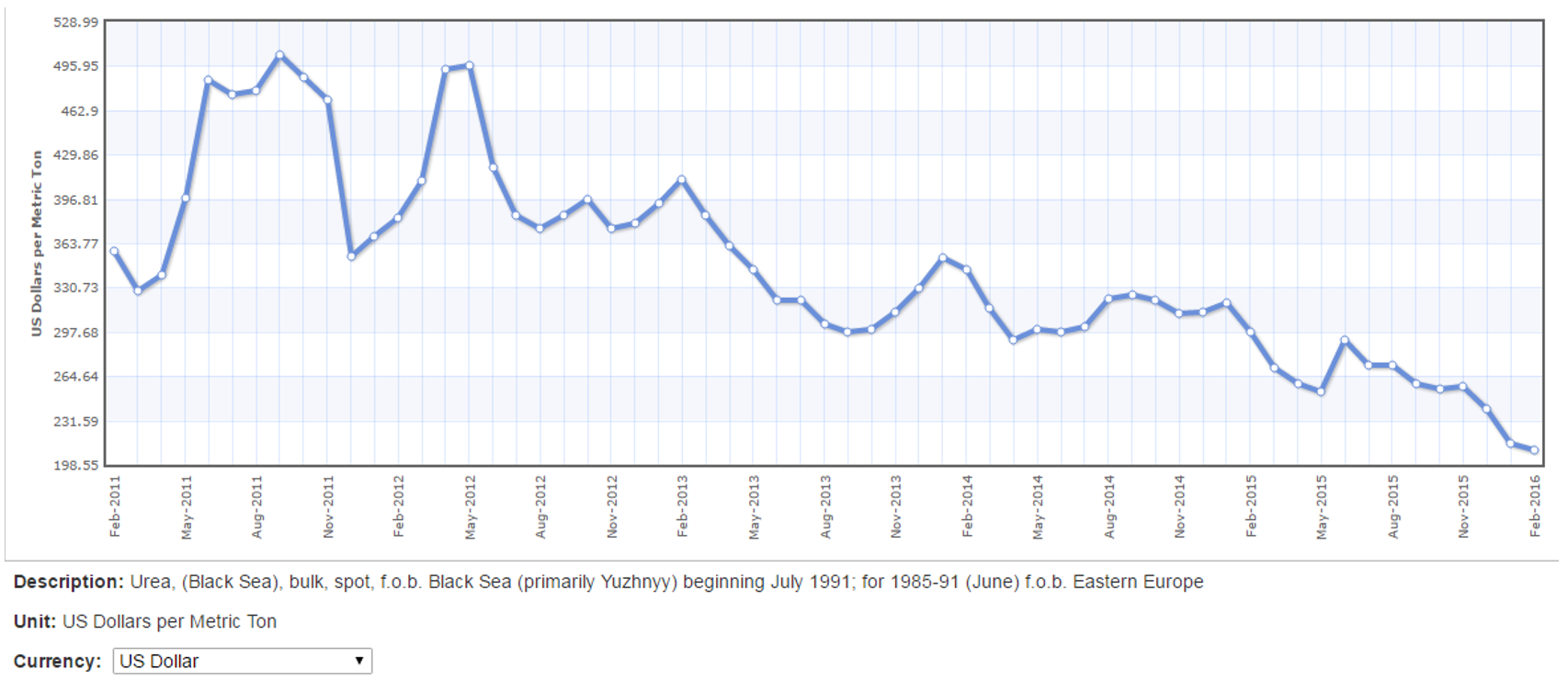Dr. Michael J. Mulvaney, Cropping Systems Specialist, WFREC, Jay, FL
Environmentally Smart Nitrogen (ESN) is a polymer-coated urea formulated as 44-0-0. The reason it contains 2% less nitrogen (N) than urea (which is 46-0-0) is due to the weight of the polymer coating. ESN is commercially available in bulk in some parts of the Panhandle. Many growers blend ESN with standard urea, commonly as a 50-50 mix, to prevent nitrogen loss or leaching from urea based fertilizers.
How slowly does ESN release N?
The release of N from ESN is temperature dependent under controlled conditions. That is, the higher the temperature, the faster the release. So it stands to reason that ESN release should be slower at corn pre-plant compared to cotton pre-plant. Likewise, we should see different N release if we broadcast compared to incorporate ESN. Research trials were conducted to measure the release rates under field conditions at Jay and Citra, Florida during the 2015 growing season.
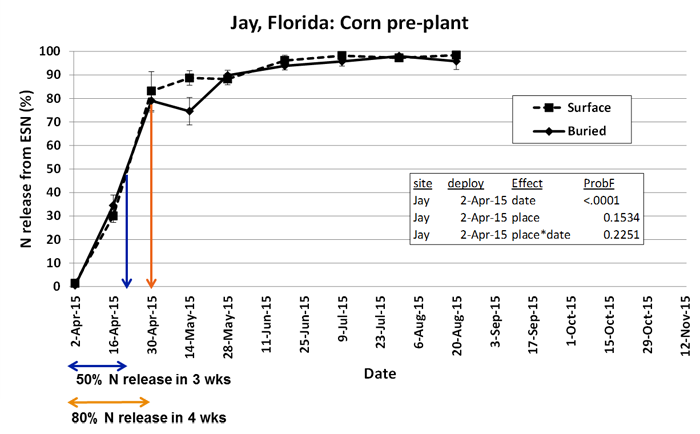 Under a corn pre-plant situation, it did not matter if ESN was buried (4 inches) or broadcast (on the surface). 50% of N was released in about 3 weeks, and 80% was released after 4 weeks.
Under a corn pre-plant situation, it did not matter if ESN was buried (4 inches) or broadcast (on the surface). 50% of N was released in about 3 weeks, and 80% was released after 4 weeks.
At corn sidedress or cotton pre-plant, broadcast ESN released N slower than incorporated ESN. Soil temperatures were measured. As you might expect, surface temperatures were cooler than soil temperatures in the top four inches. This explains the differences between broadcast and incorporated ESN. There was a 50% N release in 3 weeks if buried, but after 5 weeks if broadcast. 80% release was achieved in 5 weeks when buried and after 10 weeks when broadcast.
During cotton sidedress, we found that broadcast and incorporated ESN released N at the same rate, as we did with corn pre-plant. 50% N was released in 2 weeks, and 80% was released in 5 weeks.
But does it make a difference in yield?
We used different ESN:urea blends at different times (all pre-plant, or 25% pre-plant with 75% sidedress) under cotton production at two sites in Florida in 2015. Seed cotton yields did not show any obvious trends at either site in 2015. Corn data will not be available until next year.
Checking ESN quality:
If you are interested in the quality of the ESN you’ve purchased, you can do the “24-hour water test.” Weigh some ESN, put it in a glass of water for 24 hours, then pour it out, dry it, and weigh it again. The difference in weights is essentially the percentage of damaged prills.
Costs:
Global urea prices are at 5-year lows. I called Crop Production Ssrvices (Jay, FL, March 31, 2016) today, and urea is selling at $380/ton, and ESN sells for $600/ton. That’s a 65% increase per unit of N for ESN over urea. In 2015, prices at CPS (Jay, FL, March 24, 2015) were $560/ton urea and $687/ton ESN, an increase of 28% per unit of N over urea.
Summary:
Keep in mind that these are preliminary data at two locations in Florida. Based on these preliminary results using ESN, growers can expect 50% of N release in 2-5 weeks depending on timing and placement. 80% release can be expected in 4-10 weeks. Although controlled release of N should lead to increased N use efficiency, we were not able to pick up significant yield differences among blends or timing of applications.
Advantages over urea:
- The release of N is more controlled than urea. This should mean increased N use efficiency.
- Limits the opportunity for N loss through volatilization.
- It stores better than urea. It won’t gum up unless prills are broken.
Disadvantages compared to urea:
- It currently costs 65% more per unit of N than urea (CPS prices, Jay, FL, March 31, 2016)
- In a heavy rainfall, broadcast ESN can be pushed into low spots in the immediate area. You can incorporate ESN to help avoid this, particularly if you are on a slope.
- ESN should be handled with reasonable care. Damaged prills are as good as urea but considerably more expensive. When the front-end loader scoops from the bottom of the pile, significant damage can occur to the polymer coating.
- Four Early-Season Lessons from 2020 Peanut Production - April 9, 2021
- Sprayer Calibration Tables – Calibration Made Easy - October 30, 2020
- Stand Issues – Should You Replant Your Peanut Field? - May 15, 2020

